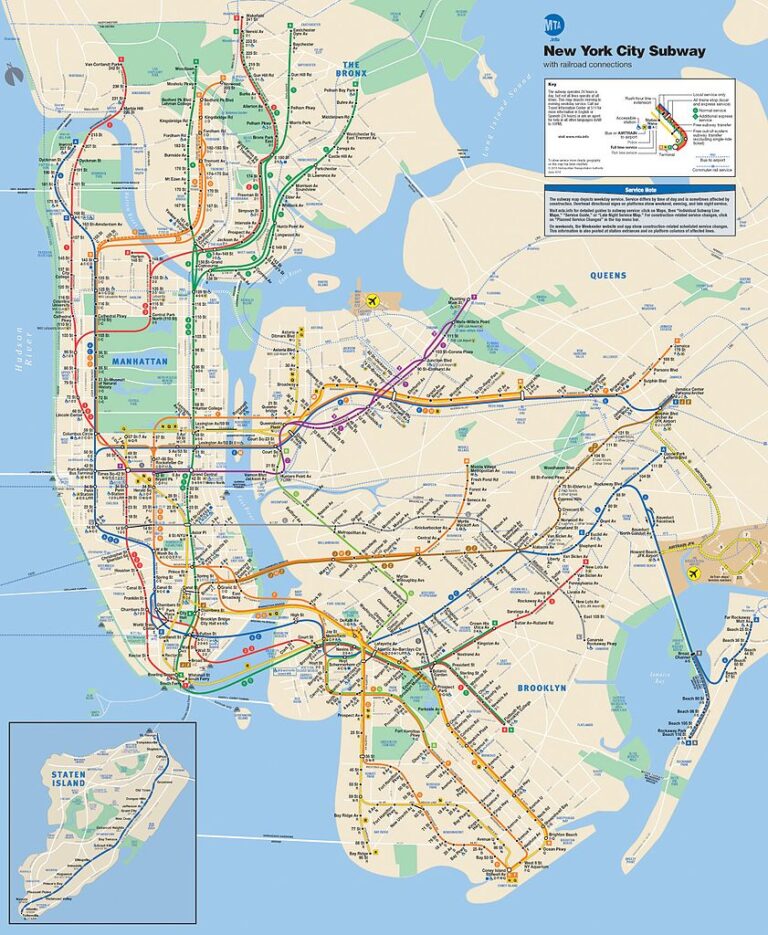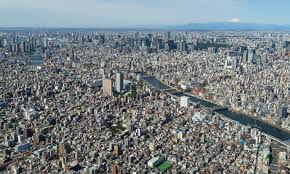Physical Address
304 North Cardinal St.
Dorchester Center, MA 02124
Physical Address
304 North Cardinal St.
Dorchester Center, MA 02124

1. Announcements I’ve posted a link on the homepage giving more info on the Market Urbanism programming at the upcoming FEE Conference, which is in Atlanta, June 15-17… The YIMBY party announced it will hold its 2nd annual conference, occurring this year in Oakland, July 13-16… And recently another YIMBY group popped up: YIMBY Denver! 2. This Week at Market Urbanism Michael Lewyn wrote Where the permits are & The “Foreign Buyers” Argument A common argument against new housing supply is that in high-cost cities such as New York, demand from foreign buyers is so overwhelming as to make new supply irrelevant. A recent study (available here) by two business school professors suggests otherwise. Emily Hamilton Conflicting Affordable Housing Policies Recently I presented on a panel at Chapman University on the future of housing in Orange County. Our panel highlighted the tensions between housing programs designed to help low-income and homeless households and those designed to help middle-income households. Sandy Ikeda wrote Addressing Local Knowledge & a book review on The Future Once Happened Here & Of Maps and Modernism In a sense, it may seem silly to criticize a map for being abstract, since, well, that’s what maps are supposed to do or else they would be useless. But there is such a thing as being too abstract. Maps should not abstract from what is essential to its purpose, which is to facilitate travel. 3. MU Elsewhere Emily‘s speech at Chapman University can be found at the 19:30 mark of this link Nolan Gray’s piece last year on Houston’s partial embrace of Market Urbanism was republished on FEE.org. He also published a to-do list for HUD secretary Ben Carson at Forbes. Carson could direct HUD officials to craft and disseminate model zoning reform legislation to the states. As urban history geeks may know, conventional “Euclidian” zoning […]

There are many ways to tell the story of urban-policy failure. Economists have shown how rent control creates housing shortages, sociologists how welfare programs destroy poor communities, and urbanologists how urban planning can debilitate cities. In his book The Future Once Happened Here, historian Fred Siegel has added a new and insightful chronicle of modern liberalism’s influence on social policy in New York, Washington, D.C., and Los Angeles over the last 30 years. Siegel identifies racial tension as a main force that has driven urban policy since the 1960s. He lucidly and engagingly describes how that policy, informed by “riot ideology” based on liberal guilt and fear, transformed some major American cities from communities of tolerant strangers and great incubators of ethnic integration into rolling riots and sinkholes of federal largess. Associated with the riot ideology is what Siegel terms “dependent individualism,” the idea that each person has an absolute right to his “lifestyle,” at public expense and regardless of the consequences for social cooperation. Those consequences have been a “moral deregulation of public space,” which has eroded the trust that urbanologist Jane Jacobs identified as the lubricant that permits great cities to work well. The largest part of the book is devoted to New York City. Siegel explains how Mayor Fiorello La Guardia’s success in getting federal aid from FDR’s New Deal in the 1930s set the pattern for fiscal irresponsibility in New York for the next five decades. Consequently, New York became dependent on an artificial, make-work economy, based on federally funded jobs and welfare bolstered by dependent individualism and the riot ideology. Nevertheless, its productive sector was still so large that both New York City and the state of New York have regularly sent more taxes to Washington than they have received in transfers. Surprisingly, supporters of […]

Inclusionary zoning allows a few people to live in desirable, new construction buildings for much less than market rates. But it also carries with it a slew of perverse consequences. Because it’s a tax on construction, it reduces supply. Inclusionary zoning also leads developers to build higher-end buildings than they would otherwise, further squeezing out lower- and middle-income tenants. While inclusionary zoning makes life easier for a few middle- and high-income residents lucky enough to secure below market-rate units in expensive cities, it also contributes to the regulatory mess that constrains housing supply in general. This in turn drives up the cost of housing. The effects of these supply constraints fall hardest on low-income residents who can least afford artificially high housing costs. By placing further constraints on housing markets, inclusionary zoning makes it so that resources dedicated to providing housing for the truly needy don’t go as far as they could in a less regulated market. Subsidies to middle-income residents come with the unfortunate side effect of making it more difficult for non-profits and government programs to make housing accessible to the truly needy. Recently I presented on a panel at Chapman University on the future of housing in Orange County. Our panel highlighted the tensions between housing programs designed to help low-income and homeless households and those designed to help middle-income households. While my talk focused on regulatory barriers that make housing unaffordable for people across the income spectrum, Maria Cabildo — a former non-profit developer for low-income housing — talked about her experiences building housing for the homeless and very-low-income families. Maria pointed out that market-rate housing is too expensive for minimum wage earners in every single county in the country. In expensive markets, policies designed to subsidize housing for middle-income people drives prices even farther out of reach for low-income […]
Thanks to Stephen Smith, I recently ran across an interesting database: HUD data on building permits by municipality. So I decided to find the number of permits per 1,000 for a wide variety of cities, focusing on (1) multifamily permits (because rising rent is a bigger problem in most places than rising home costs) and (2) during 2015 and 2016 (because isn’t two years of data always better than one?). Here’s what I found for the places I bothered to look up: Growing high cost cities permits per 1000/mean price for units with 5 or more structures in thousands Seattle 29.4 Denver 19.5 Washington 13.7 Boston 12.5 Portland 12.2 Brooklyn 11.5 Manhattan 10.1 San Francisco 8.8 San Diego 7.6 Los Angeles 6.7 Growing low cost cities Atlanta 28.7 Dallas 15.3 Nashville 14.6 Austin 13.2 (not sure whether this counts as a low-cost city- really its kind of borderline) Charlotte 12 Columbus 7.4 Houston 6.8 Indianapolis 2.3 Low demand (i.e. declining) cities Chicago 5.4 St. Louis 3.6 Cincinnati 2.3 Milwaukee 2.2 Baltimore 2.1 Detroit 1.4 Another fun fact: suburbs of expensive cities lagged behind even the low-demand cities. Nassau and Suffolk Counties had 0.3 and 0.2 multifamily permits per 1000 respectively, Marin County outside San Francisco 0.7, Orange County outside Los Angeles 4.7. Some takeaways: 1. Low-demand cities generally had less building than even the most restrictive cities. 2. Within the high-cost city group, it seems to me that there is a strong correlation between permits and prices: Seattle and Denver are certainly cheaper than San Francisco or Los Angeles. 3. On the other hand, there were some low-cost cities that didn’t have a lot of new construction, like Houston and Indianapolis. But this weirdness can be explained away by looking at new single-family construction: Houston had more than […]

This year, for the first time since 1979, New York City has revamped its subway map. A quick glance shows a change in the background tinge from light tan to light green – most pleasant. To my relief, however, on closer inspection nothing essential has changed from the last version. Thank goodness it still doesn’t look anything like the map of London’s Underground. London’s map has been touted as the path-breaking paradigm of subway maps, the object of widespread acclaim and imitation. Indeed, most major cities’ transit systems have adopted the map’s efficient symmetry, which was created by Harry Beck back in 1931 during the heyday of high modernism. Here it is (pdf). It’s easy to see why it has won praise. It’s beautiful, looking like a two-dimensional version of a uranium molecule or the lattice of some fantastic crystal. The same could be said for the maps of the underground systems of Paris and Tokyo. It’s about Usefulness As you’ve probably already guessed, however, I don’t like it. And it’s not about aesthetics. Here’s the problem: I’m just one person, of course (although here’s another guy who seems to agree with me), but when I’m in London I find myself constantly frustrated when I try to get from place to place using that map. The problem is that I need two maps: the Underground map to tell me how to get from, say, Paddington to Notting Hill Gate, and a street map to tell me exactly where the heck Notting Hill Gate is in relation to Paddington. The former abstracts from so much street-level detail that, unless you’re already familiar with the layout of London, the map, rather increasing the efficiency of travel via mass transit, actually makes it more cumbersome. New York City’s subway map on the other […]
A common argument against new housing supply is that in high-cost cities such as New York, demand from foreign buyers is so overwhelming as to make new supply irrelevant. A recent study (available here) by two business school professors suggests otherwise. The study does show more foreign involvement in the NYC market than I expected: just over 13 percent of Manhattan buyers, and 5 percent of all regional buyers, come from outside metropolitan New York. Even this share is less than in some lower-cost markets: the study notes that 17 percent of Las Vegas buyers are from outside the city. However, the impact of “out of town” buyers is pretty small: the authors conclude that out-of-town buyers “cause an increase in house prices of 1.1% and an 39 increase in rents by 1.6% in both zones.”

Four years ago my wife and I decided to take our son to a special and slightly unusual restaurant to celebrate his birthday. We were in Tokyo at the time and gave the taxi driver what we thought was the address for the restaurant – it had names and numbers on it. Cabbies in Tokyo, and in Japan in general, are renowned for their courtesy, the cleanliness of their cabs, and their driving skill. We were very surprised, therefore, when our driver suddenly pulled over and told us that “the restaurant is somewhere around here,” let us off, and drove away. After several minutes of search, we did manage to find the restaurant around the corner about a block or so away. We had a great meal, but the memory of that experience has always been something of a puzzle – until now. This summer we returned to Tokyo for a family vacation, and while relaxing in our hotel room I found myself thumbing through a guide book we had brought along, Japan Made Easy, in which I found this startling statement: “Tokyo … has thousands upon thousands of streets, but fewer than one hundred of them have names.” A quick check of Google Maps seems to confirm this assertion. (Hat tip to Jeremy Sapienza). More than One Way to Address a Letter This raises some obvious questions, such as how one addresses a letter. The guide says: …[T]he addressing system in Japan has nothing whatsoever to do with any street the house or building might be on or near. Addresses are based on areas rather than streets. In metropolitan areas the “address areas” start out with the city. Next comes the ku, or ward, then a smaller district called cho, and finally a still smaller section called banchi. This […]

1. Announcement Another reminder, if you’re a Los Angeles resident, to vote “no” on Measure S on Tuesday, March 7th. More info on the anti-housing initiative can be found here. 2. This Week at Market Urbanism Yglesias Gives Best Tweetstorm Ever by Michael Lewyn Governing The Traffic Commons by Sandy Ikeda I recently showed my students a short video about a radical way of addressing problems of traffic congestion: accidents, pollution, and time wasted on the road…It’s quite simple: Remove traffic lights, cautions, and marked pedestrian crossings. Asher Meyers provides the latest in World City Profiles: European Villages Are Showcases Of Old Urbanism There is always the lurking suspicion that great urbanism is a museum piece, something we cannot recreate. We have to console ourselves with guarding what’s left. Even then, some feel it unfit for ‘modern life,’ that humans cannot live as their recent ancestors had. Urbanists tend to celebrate cities and spaces of great renown, which makes remaking our own little corner of the world seem futile. 3. Where’s Scott? Scott Beyer has left San Francisco and is moving this weekend towards Portland, with in-between stops in Redding, Medford, Eugene and more. His 3 articles this week included one for Governing Magazine on the Yimby Movement, and two for Forbes United States Has 5 Of World’s 10 Most Congested Cities and How Far Can Miami’s Beach Development Spread? But the real story is what’s happening north of Miami Beach. Aside from a few areas dedicated to state parkland, there is now essentially a contiguous urban shoreline extending from the southern tip of Miami Beach up to Fort Lauderdale…And an awful lot of this area is becoming vertical. 4. At the Market Urbanism Facebook Group John Morris wants to start a Pittsburgh Yimby group Isabella Chu wants to know the connection between urban density and improved health outcomes Hussain Akbari wants […]

There is always the lurking suspicion that great urbanism is a museum piece, something we cannot recreate. We have to console ourselves with guarding what’s left. Even then, some feel it unfit for ‘modern life,’ that humans cannot live as their recent ancestors had. Urbanists tend to celebrate cities and spaces of great renown, which makes remaking our own little corner of the world seem futile. I spent a year living in Europe–visiting Belgium, Italy, Spain and France, among other places–and found that the best places were not the big cities, but old villages, often very wealthy in times past. And it’s easy to miss what’s special about these quiet gems: the little streets and paths within them that people call home. A newly-built mall in Leuca, Italy showcases an older design sensibility A bike tour led me to several towns in southern Italy—among them, Castro was my favorite aesthetically, with warm, immaculate streets around the center that were nonetheless devoid of many people. Castro, Italy Castro, Italy Long before going to Europe, I had seen this meme photo: Lo and behold, one such camera appeared right above where I parked my bike. But overall, Bari’s old city was my favorite, with all the life coarsing through its streets. Families would open their doors and put out folding chairs in the streets. They made the streets their living room, while literally airing their dirty laundry in the rafters between buildings. Bari, Italy A quiet street in Leuven, Belgium—perhaps my favorite of all A Flemish parking lot—the Grand Beguinage, Leuven, Belgium Reims, France In Reims, I got to tour some underground cellars that formerly stored champagne. With cool temperatures, high ceilings and lush moss lining the walls, I thought—I’d love to live here! Should people be banned from […]

As an economics professor, I often witness the surprise of my students when I explain how something as important as the market for food or clothing is self-regulating. True, there are quality and safety regulations that attempt to control potential hazards “around the edges” of these vital markets, but by far the heavy lifting is done by competition among rival firms in the same industry. Trying to sell tainted food or shoddy clothing in a competitive market without special privileges will either put you out of business or make you very quick on your feet. And I get great satisfaction when I see students realize that advertising, free entry, and entrepreneurship, in the context of economic freedom, are what keep goods and services safe, cheap, and of good quality. Witness what happens when drugs and prostitution are prohibited: overly concentrated, dangerously mixed narcotics and significantly higher rates of sexually transmitted diseases, both accompanied by violence and corruption. Here government intervention thwarts self-regulation. The Nonmarket Foundations of the Market Process In the past dozen years or so, as a result of my research interest in the economy of cities, which was sparked by my discovery of the writings of Jane Jacobs, I’ve come to appreciate more and more the nonmarket foundations of the market process. Some of this has been reflected in previous Wabi-sabi columns that were concerned with social networks (most recently last week but also here). Without norms that say, for example, treating strangers fairly and trading with them is good, or that lying to and stealing from strangers is bad, human well-being couldn’t have soared to the heights of the past 200 years, especially the last 60. Now obviously none of this would have happened either without the widespread acceptance of private property, freedom of association, and the […]